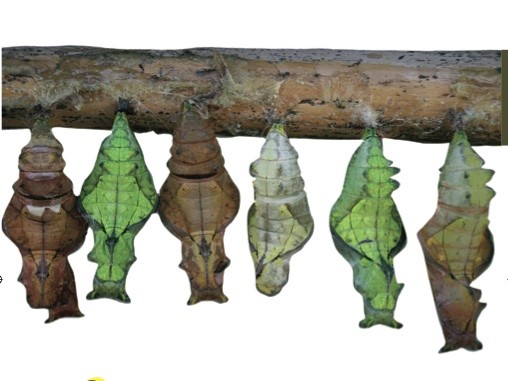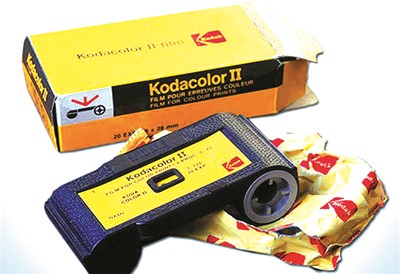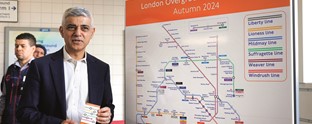Stretch of the imagination

Extending a brand beyond its established product category, industry or service requires a considered approach and a good deal of creativity. Hassan Butt investigates
This feature also includes an exlusive interview with Virgin founder Richard Branson. Click here to read the legendary entrepreneur's thoughts on innovation, growth and failure.
Treading new ground in today’s branding environment means brands have to be aware of heavy competition, rapid technological advancements and stronger core brands. Thus, the global boom in brand extensions has allowed for a metamorphosis of products, services and sectors.
With credibility, reputation and a host of operational risks to be aware of, stretching a brand is reliant on several factors working in tandem. Successful brand migrations, marriages and metamorphoses have, in the last two decades, been a growing component to brand development. “Things have moved on now, brands have to be a lot braver with their collaborations, consumers can now see through the surface and want to know why brands are taking certain steps,” says Nick Vaus, partner and creative director at London-based design agency, DewGibbons + Partners. Undergoing such a change allows a brand to engage with a new audience or reinvigorate its existing brand reputation with new content, connotations or purposes.
Today, it’s no surprise to see brands taking audacious leaps to foreign plateaus. The 2011 example of international coffee giant, Starbucks, dropping the word ‘coffee’ from its signage to make way for projects beyond hot drinks, is a prime example of how the hopes of operating across various platforms can take centre stage. Since then, with the addition of Starbucks Evenings and Starbucks Reserve Roastery and Tasting Rooms, the product line has seen expansion to beers, wines and ice creams.
Following this, 2016 saw Howard Schultz, Starbucks’ longstanding CEO, step down to concentrate on high-end brand extensions. The company has announced a new leadership structure to drive the next wave of growth. Schultz will remain chairman of Starbucks but will focus on expanding the Reserve brand. With Schultz a key member in the development of the Starbucks empire, his new focus on pushing the brand into luxury grounds typifies the organisation’s culture of extension. Yet as brand extensions continue to vary in form, gauging
effectiveness remains a key pillar of strength in any new venture. Whether its extension by association, rejuvenation or innovation, establishing new parameters for a brand can increase customer value, and in turn, ensure the fulfilment of growth objectives. Yet over-stretching a brand can result in negative consequences. Avoiding the risks of dilution, or the possible financial hurdles of downward stretching and assuming something false of a customer base, requires a fine balance between identity and adaptation.
For European budget airline EasyJet and the EasyGroup, a journey of wide-ranging expansion was born in 1998. Moving beyond its origins, the holding company quickly rose to superbrand status with successful moves to wider transportation, cyber cafés and gyms, leveraging various markets with affordable price points. Yet as EasyGroup continued its expansion strategy, several of its product ranges overstretched into dormancy. The now-defunct EasyCinemas, Easy4Men and EasyMusic were unable to capitalise on previous KPIs.
Maintaining the pace of success during organisational expansion produces major challenges for brands wishing to extend. In the case of EasyGroup, the success of its yield- management model carefully balanced revenue streams and financial management with marketing and operational elements. Yet unsuccessful brand extensions can often point brands in the right direction. With markets regulated in different ways and brand strategists misfiring in many cases, EasyGroup’s unsuccessful efforts to break into other domains rallied further focus into the brand’s core values of innovation and affordable prices.
American technology company Kodak’s tradition of licensing its name to numerous products in hopes of expansion was a key factor to its subsequent downturn in the late 1990s. Extending to the wrong things, Kodak missed a crucial window to capitalise on digital advancements and become a disruptive force. Yet in building the brand back up, Kodak didn’t abandon the possibility of brand extension. In a recent partnership with brand management company, CAA-GBG, Kodak’s focus remains grounded in expanding the brand name to desirable platforms such as the development of its Super 8 cameras (widely used in film manufacturing), touch sensors and 3D printing.
Understanding target audiences as a brand is something global brand consultancy, Protein, consider a cornerstone to cultivating successful brand extensions. Yet the most noticeable brand extensions manifest themselves in product-focused shifts, but extending brands to appeal to desired audiences take several forms. Protein’s work with vodka specialist, Absolut, led to the production of Absolut Nights, a London event that took a step away from the brand’s FMCG focus, pushing the boundaries of nightlife.

“Brands have to be a lot braver with their collaborations, consumers can now see through the surface and want to know why brands are taking certain steps”
Protein’s results included a 33% increase in Absolut’s advocates following the event and a brand extension that allowed Absolut to use different methods in reaching consumers. Zeenah Vilcassim, head of Protein UK, says, “We believe that a brand isn’t what you tell people it is, it’s what people tell each other it is. This translates to a pay less, do more mentality, that’s when people notice your brand. Doing smaller, better things that connect you to your consumers will help your brand shift and pivot to build up long term advocacy. Say less, do more, in its simplest form.”
Equally, for Kazim Rashid, founder and creative director of brand consultancy endless-love-show, working with brands wishing to move into new cultural spaces requires a different process when considering extension. Rashid’s involvement as one of the curators behind ‘Future Rising,’ a project that saw luxury hotel chain W Hotels team up with online music streaming service, Mixcloud, to create a platform for identifying future creatives, culminated in a collection of talks and parties that sought to push both brand names into new territories.
The Future Rising collaboration used W Hotel locations in seven cities from Doha to Barcelona, hosting seven talks and parties, creating a network for developing artists and offering Mixcloud’s resources to give audiences carefully curated music. Future Risings saw both W Hotels and Mixcloud sow the seeds for extension into developing areas, leveraging a new, creative domain using both the practical elements of both services and capitalising on the combination of both brand’s reputations.
Rashid says, “For me, the biggest misnomer is the fact that there’s a huge disparity between where brands perceive they are, and where they actually are. Or what brands think they want versus what’s right for them. Sometimes I get a brief in and I know there’s a fundamental problem where the client or the brand doesn’t understand the audience space. That briefing, in turn, actually points out where the problems in that area exist.”
However, with markets more malleable today than in days gone by, brand extensions are a common strategy used by most successful brands. As audiences diversify and technology becomes more disruptive, smart stretches offer consumers not only a new product range or service, but liberate consumers from the stalemate of dominant market leaders.
Perhaps quintessentially so, Virgin Group’s model of brand extension sits as one of the best examples of continuously breaking the glass ceiling of a sector, infusing innovation, quality and energy into each of its many enterprises. From music records to space tourism, global business magnate Richard Branson’s ongoing approach to brand extensions serve as a healthy indicator to the strength of growth by extension, something Virgin continue to showcase. Click here for an exclusive interview with Branson.
Since the concept emerged in the late 1980s, the trajectory of brand extensions has steadily risen. In its current form, the possibilities for growth into new areas are limited only by brand interest. As risks shrink and reputations survive the battlegrounds of blunder, misfiring can also be an experience brands looking to extend can learn from. Brand extensions now take on completely new challenges, with successful results leading to greater confidence in breaking the mould of categorisation. The question of whether today’s outlook on brand extensions completely does away with singularity amplifies the scale of success and failure.












